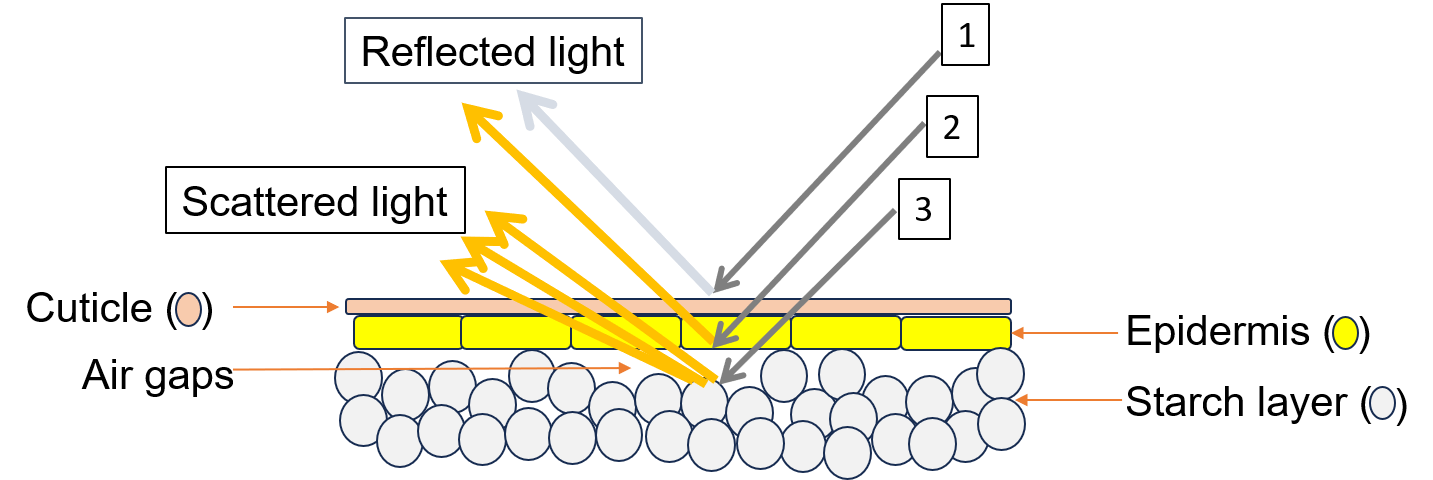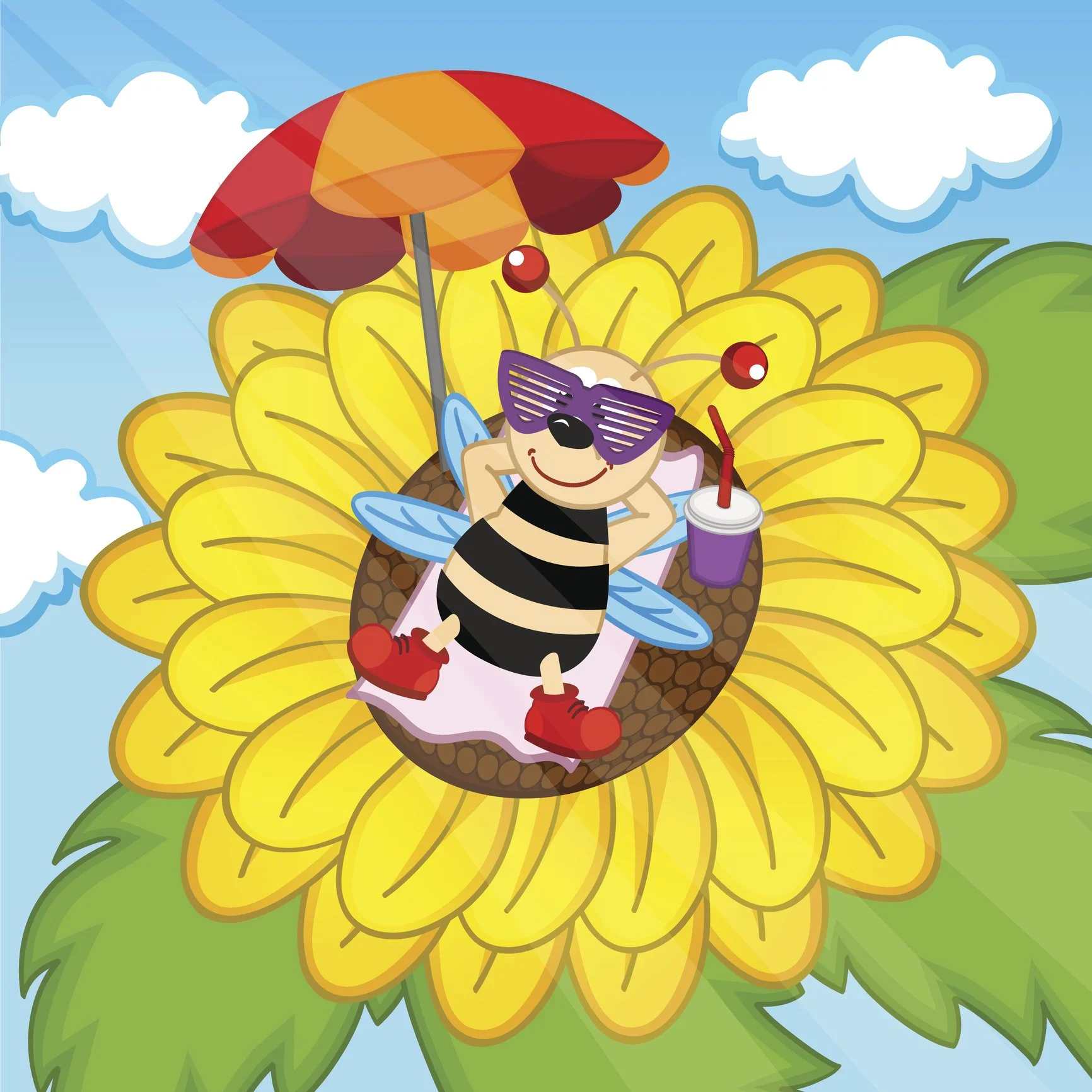Q1: Legend has it that you can tell if someone likes butter by checking the reflectance of this flower on that person’s chin. Which flower is it?
Hint: It’s all in the name!
Buttercup! Or Ranunculus repens, for the scientific purists😊. According to folklore, you can tell if a person likes butter by holding a buttercup flower under that person’s chin and checking for a yellow reflection on their skin. Point to ponder—won’t it be just as effective to have that person taste butter and see if they like it or not? Tales apart, what is the mystery surrounding the buttercup flower?
Fig 1: The buttercup flower (Ranunculus repens). Note the characteristic feature of this flower—its super-glossy petals! (Photo credit: iStock)
Have a good look at the buttercup flower in the picture. What is the most noticeable thing about it? The super-duper gloss, of course! The petals look as if they have been painted over with a glossy yellow nail polish! What causes this intense coloration and gloss? Grab your proverbial microscopes; it is time to have a good look at the internal structure of the buttercup petals.
Fig 2: Cellular structure of the upper surface of a petal of the buttercup flower.
As you can see in this simplified representation of the cellular layers in the upper petal surface of the buttercup flower (Fig 2), there are 3 important layers:
1. A thin cuticle
2. A flat-celled epidermis carrying the carotenoid pigment
3. A white-colored starch layer
The cuticle and the epidermal layer are the reflective layers of the petal, giving it that admirable sheen [1]. The upper epidermis on the petal surface of the buttercup flower is very different to that of its contemporaries. It has flat cells, which is in stark contrast to other flowers (rose, for instance), which have conical cells. These flat cells are arranged in a tile pattern, thereby giving the petal surface that super-smooth finish. The epidermis acts as a mirror or an optical thin film, reflecting the sunlight so that it appears as a flash, thereby attracting pollinators from far away. It helps that the buttercup flowers are heliotropic (just like a sunflower), meaning that they follow the direction of the sun. This helps them orient themselves in the position which is best for the optimum reflection of sunlight. The epidermal layer is densely packed with carotenoid pigments, which absorbs the blue end of the spectrum. The end result of this is strongly reflected light which is primarily yellow in color.
In between the epidermis and the underlying starch layer is a network of discontinuous air gaps. This feature is a buttercup-family exclusive, for these air gaps have not been observed in any other plant system before [2]. The air gaps enhance the reflectance of the epidermal layer; the reflectance was found to decrease two-fold when researchers filled the air gaps with water.
After the epidermis and the air gaps comes the starch layer, which is another defining feature of these plants. The starch cells occur almost exclusively in the buttercup family! They are white in color and strongly scatter the light falling on them, giving the flowers that diffused yellow glow.
The roles played by the different layers of cells in the buttercup flowers can be understood by analyzing, umm…donuts! The researchers involved in this study used the example of uncoated and coated white paper to illustrate this, but I assume that the visuals of yummy donuts dancing in front of your eyes will make it easier to understand :-D. Ok, back to the topic! Let’s take two donuts—one plain and one glazed (Fig 3)
Fig 3: A plain (A) and a glazed (B) donut. Notice how the plain donut has a non-glossy surface which scatters light, thereby making it look matte. In contrast, the glaze of the other donut reflects light, making it look glossy.
The plain donut doesn’t have a smooth and glossy surface, hence it scatters light instead of reflecting it. The starch layer of the buttercup (or the conical epidermis of other flowers) functions in a similar manner, scattering the light and giving the flower a matter color. Now turn to the glazed donut. The glaze on the donut does the same function as the flat epidermis and the cuticle do in the buttercup flower; it reflects light. The result—that eye-catching gloss!
How important are the flat cells of the epidermis for the glossy appearance of the buttercup? Let’s understand this by comparing the buttercup to its cousin, the kingcup (who came up with such beautiful names?). The kingcup, also known as marsh marigold or Caltha palustris, belongs to the Ranunculaceae family, just like the buttercup (Fig 4). However, there is a telling difference between the two—the marsh marigold flowers are matte yellow in color, as against the glossy yellow of the buttercup. That’s because the epidermal cells of the kingcup are conical in shape, in contrast to the flat cells of the buttercup! This makes the petal surface of the kingcup uneven and non-glossy, which results in sunlight getting scattered, instead of getting reflected.
Fig 4: (A) Kingcups (Marsh marigold or Caltha palustris) and (B) Buttercups (Ranunculus repens). They are closely related to each other, with one noticeable difference. Can you spot it?
Now that we know the role of each of the layers in scattering/reflecting light, let us have a look at the internal structure of the buttercup petal again (Fig 5). A ray of sunlight falling on the cuticle (ray 1) would be directly reflected. The ray of light which falls on the lower epidermis (ray 2) would be reflected too. However, since the ray passes through a layer (epidermis) which is jam-packed with the carotenoid pigment, the wavelengths in the blue part of the spectrum will be absorbed. Therefore, the light reflected by the lower epidermis will be primarily yellow in color. The ray of light falling on the starch layer (ray 3) will be scattered. Again, since this ray passes through the epidermis, the blue wavelengths would be absorbed, leaving the scattered diffused light primarily yellow in color.
Fig 5: The play of light by the different layers of cells on the petal surface of the buttercup.
As you can see, there is an elaborate set-up behind the beautiful, alluring glow of the buttercups. What is the purpose of it all? Surely not to tell apart the butter-lovers from haters! Its purpose is the same as that of every other flower— to attract pollinators; albeit in different ways. The buttercup is heliotropic, which means that it follows the sun. This allows it to optimize its glossy appearance to the extent that the flower might appear as a ‘flash’ to insects hovering far above, thereby attracting their attention. The diffuse yellow coloration is a part of the flower’s signal for insects in a closer range.
The magic of this play of light doesn’t end with catching the eye of the pollinators. The sunlight reflected on to the reproductive organs helps increase the floral temperatures to create a sauna-like setting for the bees. Now, why is that needed? Turns out, just like us, the bees love a quiet retreat in a sauna! They seek out warmer flowers, which helps them conserve energy during their nectar-foraging expeditions [3]. Now I am starting to get seriously jealous of the bee girls. I totally accept the fact that they work really hard; they fly 50,000 miles (80,000 km) to make 1 pound (454 grams) of honey [4]! At this rate, the distance covered by them to make a few kilograms of honey would earn us enough frequent flyer points to ensure free travel for life. But look at the perks of their job! Relaxing in a sauna within a flower, with a glass of yummy nectar in your hands—what’s not there to love about the bee life? Now that I have sown the seeds of envy against the bees in your heart too, off I go to my home sauna—a hot shower, plus lots of orange juice with a good book in hand!
Fig 6: A flower sauna set up just for you, and yummy nectar to sip on while you recharge your batteries—what’s not to love about the bee life?!
References:
[1] Vignolini S et al. (2012). Directional scattering from the glossy flower of Ranunculus: how the buttercup lights up your chin. Journal of the Royal Society Interface. 9:1295-1301. doi:10.1098/rsif.2011.0759. (https://royalsocietypublishing.org/doi/10.1098/rsif.2011.0759)
[2] Van der Kooi CJ et al. (2017). Functional optics of glossy buttercup flowers. Journal of the Royal Society Interface. 14:20160933. doi:10.1098/rsif.2016.0933. (https://www.ncbi.nlm.nih.gov/pmc/articles/PMC5332578/)
[3] Rands SA et al. (2008). Floral temperature and optimal foraging: Is heat a feasible floral reward for pollinators? PLoSOne. 3(4):e2007. doi:10.1371/journal.pone.0002007. (https://journals.plos.org/plosone/article?id=10.1371/journal.pone.0002007)
[4] https://honeycouncil.ca/how-to-make-a-pound-of-honey/






